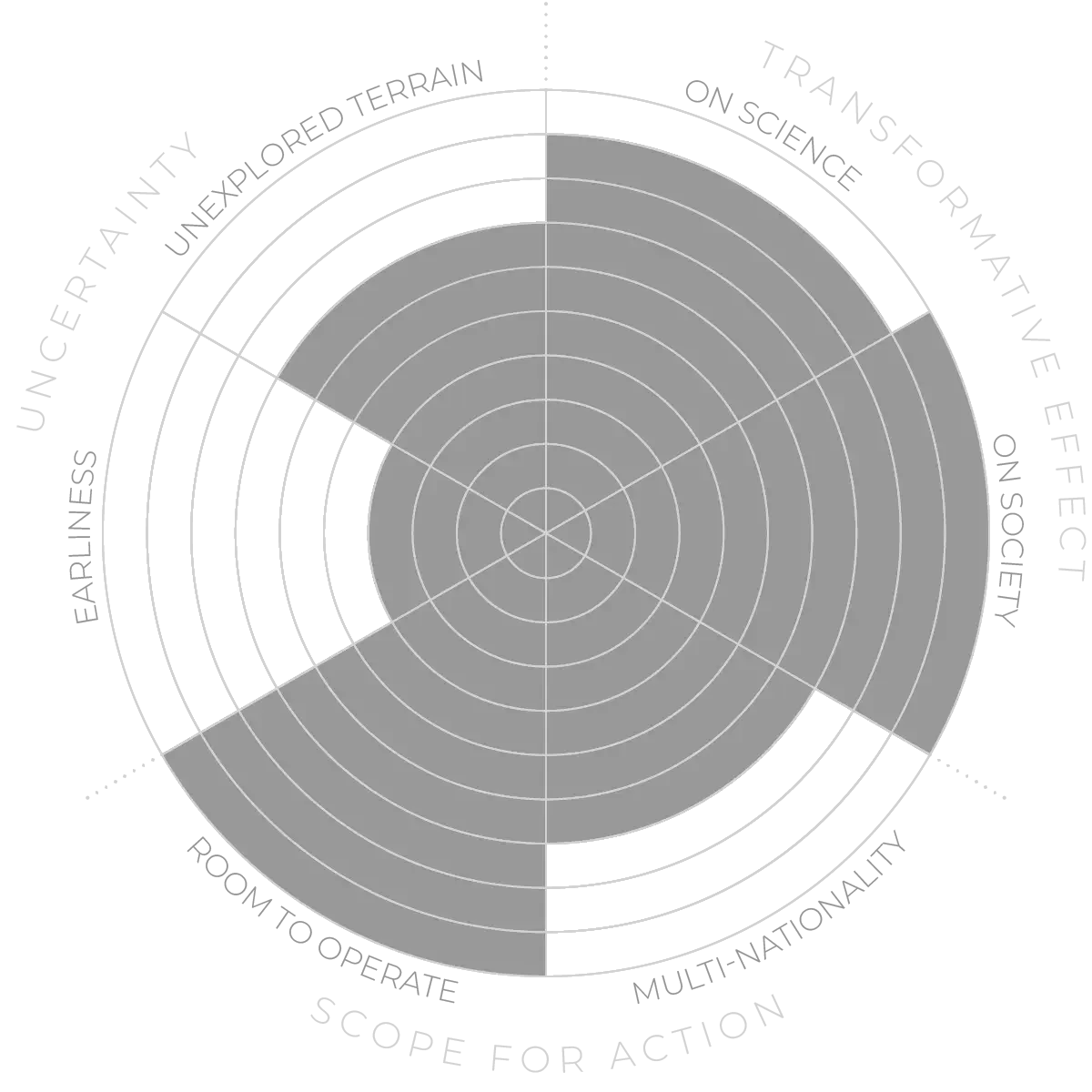Future Horizons:
10-yearhorizon
Engineered organisms achieve climate resilience
25-yearhorizon
Biodiversity begins to be restored through engineering
There are multiple avenues for using synthetic biology to mitigate climate change. Algae and other cellular factories could be used to produce renewable fuels, offering a less land-intensive alternative to biofuels.54 Notably, some early work has been done on engineering microbes to produce hydrogen.55Unlike existing methods of hydrogen manufacture, this would be low- or zero-carbon.56Similarly, microbes are being engineered for enhanced carbon capture, potentially removing carbon dioxide from the air.57
The flow of pollutants into the environment may be reduced through the use of synthetic biology. For instance, chemical pesticides may be partially replaced by biotechnologies such as RNA interference for pest control or by engineering the pests themselves — using gene drives, for example.58 Where pollutants are already present, engineered microbes may speed up their degradation.59
Endangered species and ecosystems may be made more robust through synthetic biology.60[56] Genome editing may be used to monitor threatened species or to identify the species making up harmful algal blooms.61 More radically, genome editors could enhance adaptive traits, for instance by making coral holobionts more tolerant of higher temperatures to protect coral reefs from climate change.62 Any such endeavours would need a reliable understanding of the ecosystems involved: in particular, it is important to gain a better understanding of microbial ecosystems, which are also threatened but are understudied.63
Energy, climate and conservation - Anticipation Scores
The Anticipation Potential of a research field is determined by the capacity for impactful action in the present, considering possible future transformative breakthroughs in a field over a 25-year outlook. A field with a high Anticipation Potential, therefore, combines the potential range of future transformative possibilities engendered by a research area with a wide field of opportunities for action in the present. We asked researchers in the field to anticipate:
- The uncertainty related to future science breakthroughs in the field
- The transformative effect anticipated breakthroughs may have on research and society
- The scope for action in the present in relation to anticipated breakthroughs.
This chart represents a summary of their responses to each of these elements, which when combined, provide the Anticipation Potential for the topic. See methodology for more information.



